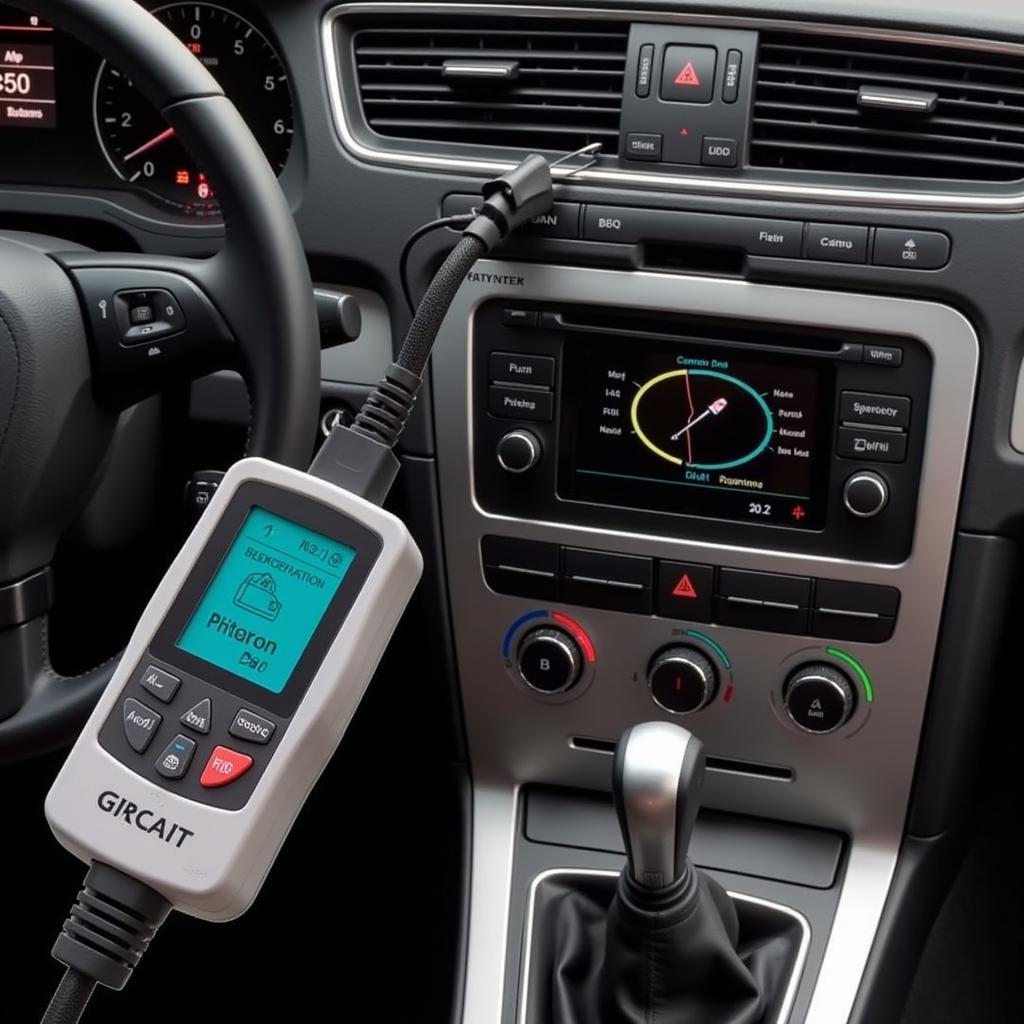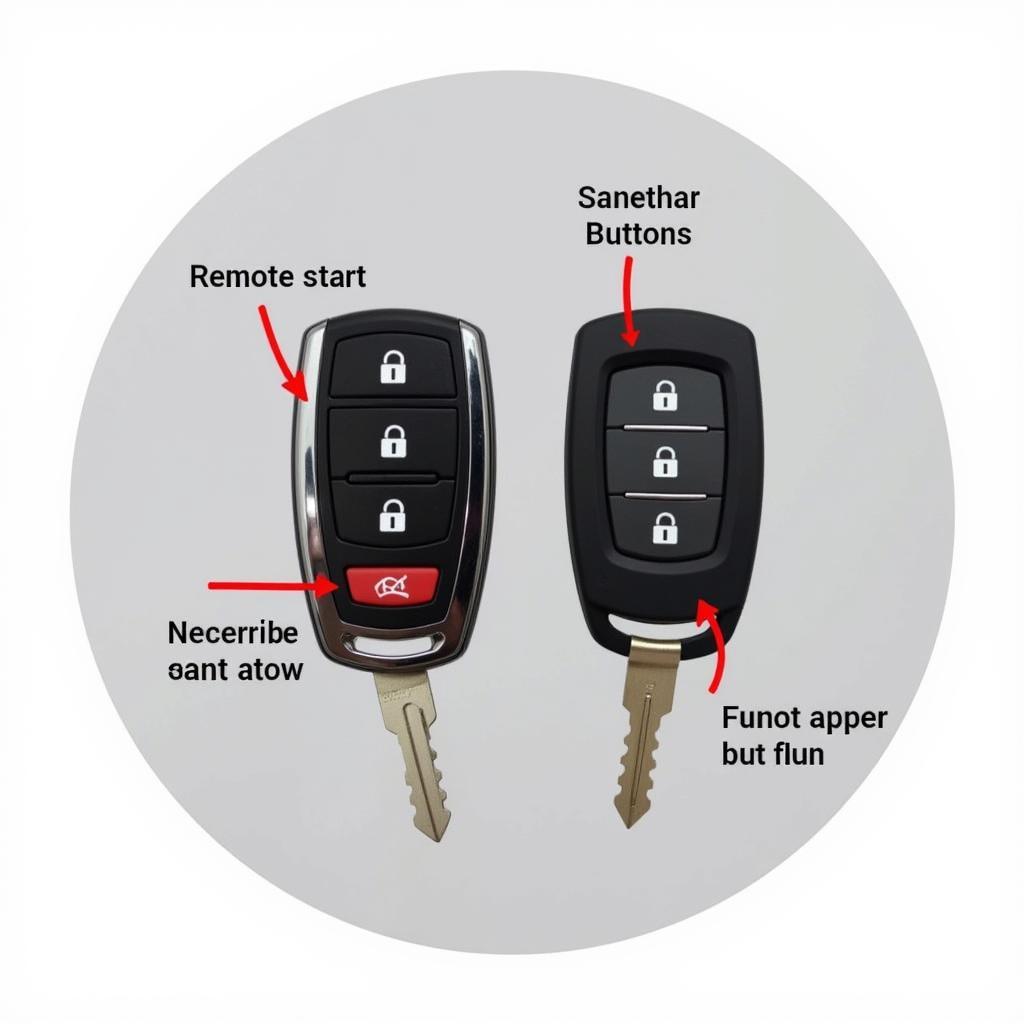If you’re seeing the dreaded “brake pad warning light” on your Volkswagen Passat’s dashboard, don’t panic! This guide will walk you through everything you need to know about the warning light, why it comes on, and how to reset it.
Understanding Your Passat’s Brake Pad Warning Light
The brake pad warning light is a crucial part of your Passat’s safety system. It’s designed to alert you when your brake pads are wearing thin and need to be replaced. Ignoring this warning can lead to reduced braking efficiency and even damage to your brake rotors, leading to costly repairs.
What Triggers the Warning Light?
Most Volkswagen Passats use a simple yet effective system to monitor brake pad wear. A sensor, usually a small wire, is embedded within the brake pad material. As the pad wears down, this wire eventually makes contact with the brake rotor. This contact completes a circuit, triggering the warning light on your dashboard.
Is it Safe to Drive with the Brake Pad Warning Light On?
While you might be tempted to ignore the warning light, especially if your brakes seem to be working fine, it’s crucial to address the issue promptly. Driving with worn brake pads compromises your safety and can lead to more extensive damage in the long run.
How Long Can I Drive with the Light On?
There’s no magic number for how long you can drive with the brake pad warning light illuminated. The urgency depends on several factors such as your driving style, the condition of your rotors, and the remaining thickness of your brake pads. It’s best to have your brakes inspected by a qualified mechanic as soon as possible.
Resetting the Brake Pad Warning Light on a VW Passat
Resetting the brake pad warning light after replacing your brake pads is essential. Failure to do so will likely result in the warning light remaining illuminated, even with new pads installed. The process can vary slightly depending on your Passat’s model year, but the general steps are as follows:
Tools You’ll Need:
- A code reader or OBD-II scanner compatible with your Passat
- New brake pads (if necessary)
 OBD-II Scanner Connected to a VW Passat
OBD-II Scanner Connected to a VW Passat
Resetting the Light:
- Replace the brake pads (if needed): If your brake pads haven’t been replaced yet, now is the time to do it.
- Connect the code reader: Locate your Passat’s OBD-II port, typically found under the dashboard on the driver’s side. Plug in your code reader or OBD-II scanner.
- Turn on the ignition: Turn your car’s ignition to the “on” position but don’t start the engine.
- Access the brake system module: Using the navigation buttons on your code reader, locate and select the “brake system” or “ABS” module.
- Select “Reset Codes”: Navigate to the “reset codes” or “clear codes” option within the brake system module. Follow the on-screen prompts to complete the reset.
- Disconnect the scanner and test drive: Turn off the ignition, disconnect the scanner, and take your Passat for a short test drive to confirm the warning light has been successfully reset.
What if the Light Won’t Reset?
If your Passat’s brake pad warning light remains on after attempting a reset, there might be an underlying issue. Here are a few potential causes:
- Faulty sensor: The brake pad wear sensor itself could be damaged or malfunctioning.
- Wiring problems: There could be a break or short in the wiring harness connected to the sensor.
- Control module issues: In rare cases, the issue might lie with the ABS control module.
It’s crucial to consult a qualified mechanic to diagnose and address any of these issues.
Passat Parking Brake Warning Light vs. Brake Pad Warning Light
Don’t confuse the brake pad warning light with the parking brake warning light. The parking brake warning light illuminates when your parking brake is engaged and will typically be a different color or symbol.
vw passat brake pad warning light reset
Tips for Maintaining Your Passat’s Brakes
- Regular inspections: Have your brakes inspected by a qualified mechanic at least once a year or every 10,000-12,000 miles.
- Quality brake pads: Invest in high-quality brake pads from reputable brands.
- Smooth braking: Avoid hard braking whenever possible to minimize wear and tear on your brake pads and rotors.
By understanding the importance of the brake pad warning light and following these maintenance tips, you can keep your Volkswagen Passat running safely and efficiently for years to come.
FAQs
How do I know if my Passat needs new brake pads?
Besides the warning light, you might notice other signs of worn brake pads, such as squeaking or grinding noises when braking, a vibrating brake pedal, or your car taking longer to stop.
Can I reset the brake pad warning light myself?
Yes, you can reset the brake pad warning light yourself using an OBD-II scanner. However, if the light remains on after a reset, it’s best to consult a mechanic.
How much does it cost to replace brake pads on a VW Passat?
Brake pad replacement costs can vary depending on the model year, the type of brake pads used, and labor rates in your area. It’s best to contact a mechanic or dealership for a quote.
How often should I replace my Passat’s brake pads?
Brake pad lifespan varies greatly depending on your driving style and conditions. However, it’s generally recommended to have them inspected every 10,000-12,000 miles or annually.
What happens if I ignore the brake pad warning light?
Ignoring the warning light can lead to severely worn brake pads, damage to your rotors, reduced braking efficiency, and potentially dangerous driving conditions.
Is the brake pad warning light the same as the ABS light?
No, the brake pad warning light and the ABS (Anti-lock Braking System) light are separate warning systems. The ABS light indicates an issue with the anti-lock braking system.
Can a low brake fluid level trigger the brake pad warning light?
While a low brake fluid level can illuminate a warning light, it’s usually a separate warning light and not the brake pad warning light. However, it’s essential to address low brake fluid levels promptly.

